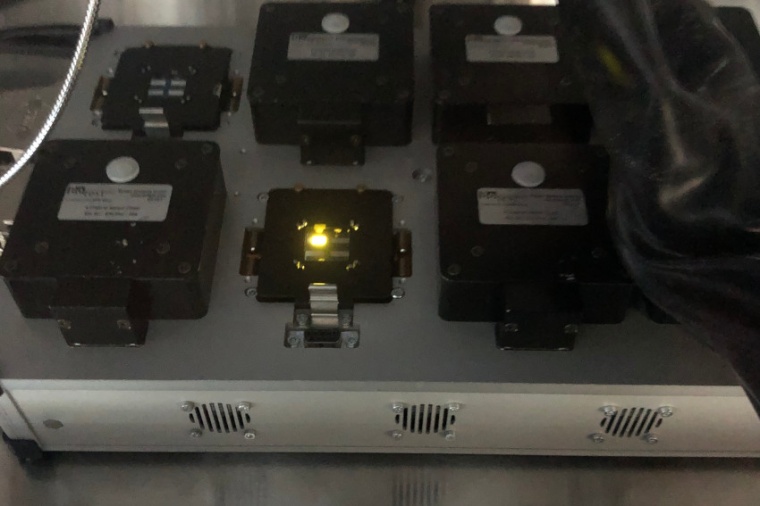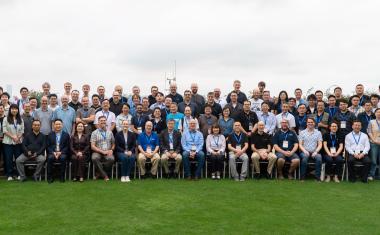New kind of eco-friendly light-emitting electrochemical cells
Long-lasting LECs use dendrimers combined with cellulose acetate and graphene.
In research that could lead to a new age in illumination, researchers from Japan and Germany have developed an eco-friendly light-emitting electrochemical cells using dendrimers combined with biomass derived electrolytes and graphene-based electrodes. “One example of an emerging technology using electroluminescence is light-emitting electrochemical cells or LECs,” explains Ken Albrecht from Kyushu University's Institute for Materials Chemistry and Engineering. “They have been attracting attention because of their cost advantage over organic light emitting diodes, or OLEDs. Another reason for LECs popularity is their simplified structure.”

OLED devices generally require the carful layering of multiple organic films, making it tricky and costly to manufacture. LECs on the other hand can be made with a single layer of organic film mixed with light-emitting materials and an electrolyte. The electrode that connects it all together can even be made from inexpensive materials unlike the rare or heavy metals used in OLEDs. Moreover, LECs have lower driving voltage, meaning they consume less energy.
“Our research teams have been exploring new organic materials that can be used in LECs. One such candidate are dendrimers,” explains Rubén D. Costa of the Technical University of Munich, who led the research team in Germany. “These are branched symmetric polymeric molecules whose unique structure has led to their utility in everything from medicine to sensors, and now in optics.” Building upon their past work on developing dendrimers, the research team began modifying their materials for LECs.
“The dendrimer we developed initially had hydrophobic molecular groups. By replacing this with hydrophilic, or water liking, groups we found that the lifetime of the LEC device could be extended to over 1000 hours, more than 10-fold from the original,” explains Albrecht. “What makes it even better is that thanks to our collaboration with Costa's team the device is very eco-friendly.” For years, Costa's team in Germany had been working on developing cheaper and more environmentally friendly materials in light-emitting devices. One material they have been experimenting with is cellulose acetate, a common organic compound used in everything from clothing fibers and eyeglass frames.
“We used biomass derived cellulose acetate as the electrolyte in our new LEC device, and confirmed that it has the same long-life span,” continues Costa. “Moreover, we also found that graphene can be used as an electrode as well. This is a vital step toward making flexible light-emitting devices using environmentally friendly materials.”
The team explains that while their work is promising more research is necessary before the devices can be made to market. “The device we made here only illuminates in yellow, so we need to develop it to illuminate in the three primary light colors: blue, green, and red. Luminescence efficiency, how bright the light is, also needs work,” concludes Albrecht. “Though thanks to our international collaboration, the future looks bright.” (Source: Kyushu U.)
Links: Institute for Materials Chemistry and Engineering (K. Albrecht), Kyushu University, Fukuoka, Japan • Biogenic Functional Materials, Technical University of Munich, Straubing, Germany











